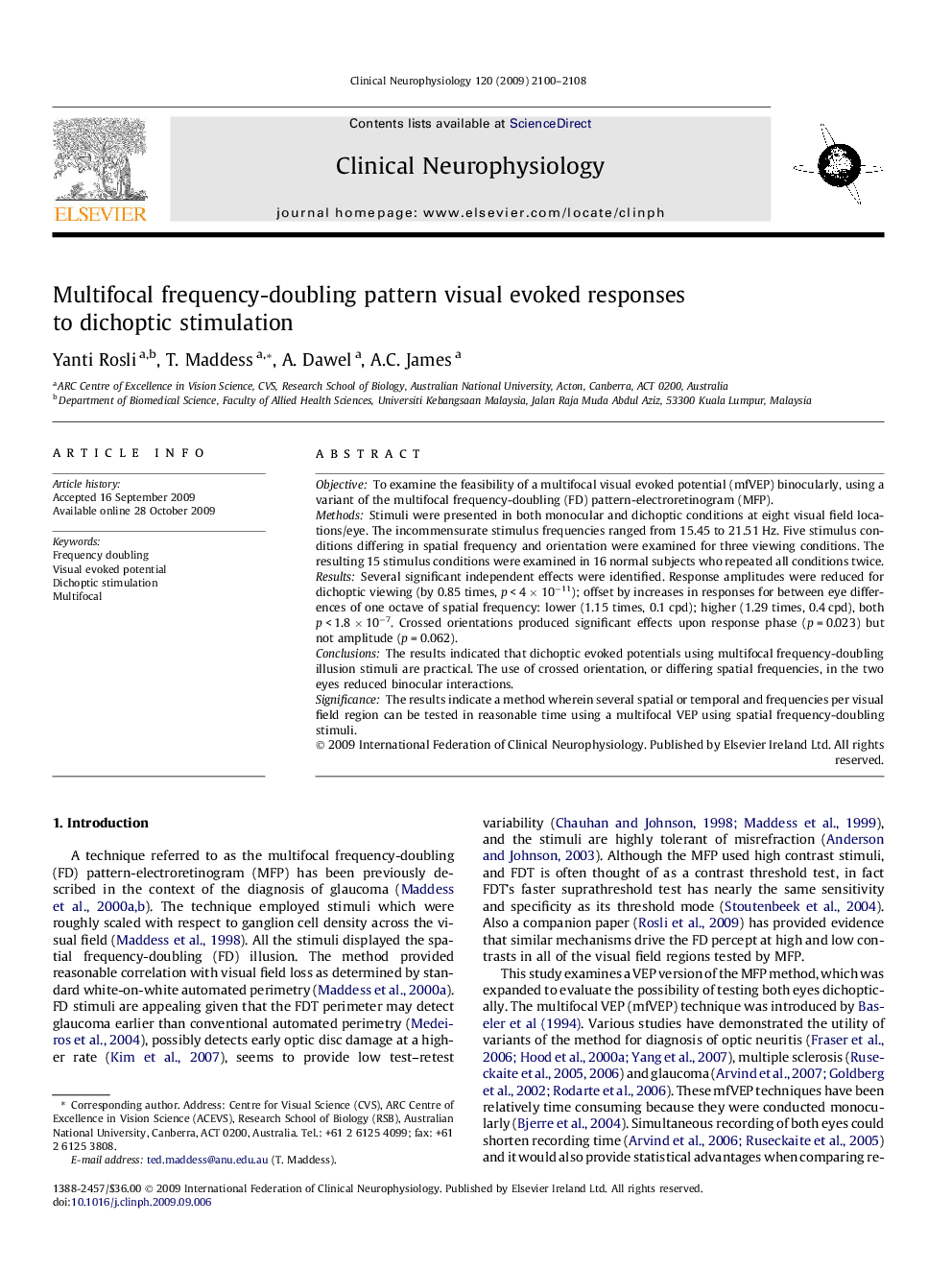| Article ID | Journal | Published Year | Pages | File Type |
|---|---|---|---|---|
| 6009055 | Clinical Neurophysiology | 2009 | 9 Pages |
ObjectiveTo examine the feasibility of a multifocal visual evoked potential (mfVEP) binocularly, using a variant of the multifocal frequency-doubling (FD) pattern-electroretinogram (MFP).MethodsStimuli were presented in both monocular and dichoptic conditions at eight visual field locations/eye. The incommensurate stimulus frequencies ranged from 15.45 to 21.51 Hz. Five stimulus conditions differing in spatial frequency and orientation were examined for three viewing conditions. The resulting 15 stimulus conditions were examined in 16 normal subjects who repeated all conditions twice.ResultsSeveral significant independent effects were identified. Response amplitudes were reduced for dichoptic viewing (by 0.85 times, p < 4 Ã 10â11); offset by increases in responses for between eye differences of one octave of spatial frequency: lower (1.15 times, 0.1 cpd); higher (1.29 times, 0.4 cpd), both p < 1.8 Ã 10â7. Crossed orientations produced significant effects upon response phase (p = 0.023) but not amplitude (p = 0.062).ConclusionsThe results indicated that dichoptic evoked potentials using multifocal frequency-doubling illusion stimuli are practical. The use of crossed orientation, or differing spatial frequencies, in the two eyes reduced binocular interactions.SignificanceThe results indicate a method wherein several spatial or temporal and frequencies per visual field region can be tested in reasonable time using a multifocal VEP using spatial frequency-doubling stimuli.
